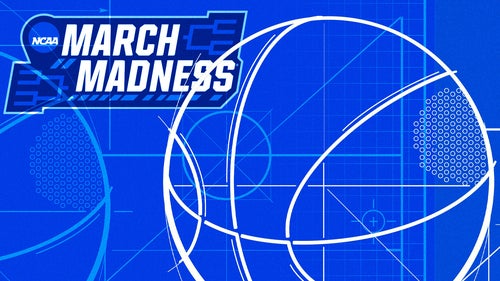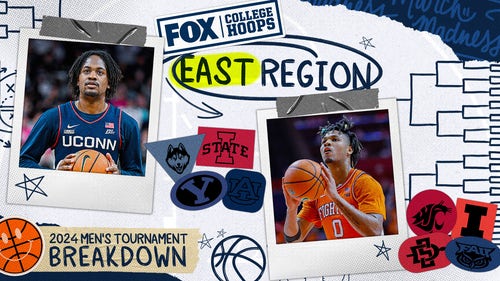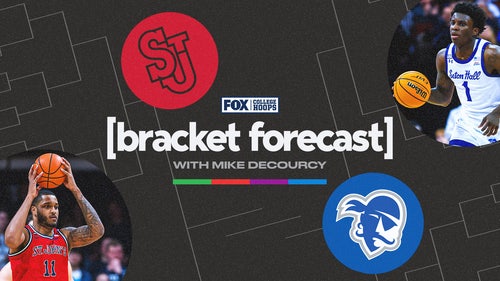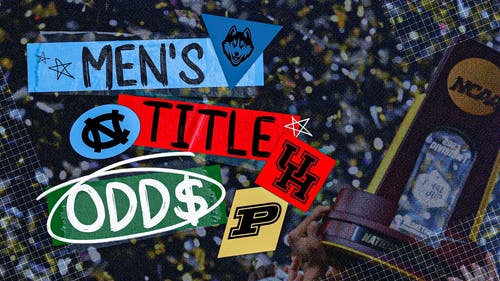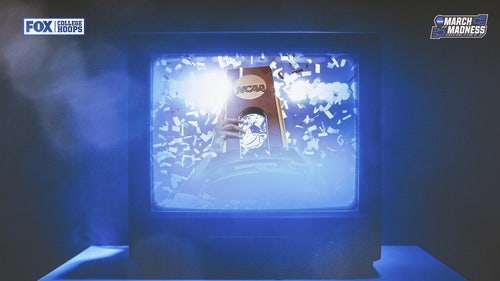John Fanta
College Basketball Broadcaster and Reporter
At 6:15 p.m. ET Sunday evening, as Boise State and Colorado were unveiled as two of the last four in the NCAA Men’s Basketball Tournament field, there was a collective gasp.
How were the Broncos, with a NET of 26 and six Quad 1 wins, plus a quality non-conference strength of schedule, just barely in the field? But beyond that question, you could feel a collective groan from the Big East Conference office in Manhattan.
The Big East, which ranked second analytically in KenPom this season, entered the day sweating with Seton Hall, St. John’s and Providence firmly on the bubble. When the Broncos and Buffaloes heard their names called midway through Sunday’s Selection Show, it was a bad sign for what was to come for the Big East, as Virginia and Colorado State took the final two spots in the field.
For the first time since 1993 and just the second time since the tournament expanded in 1985, the Big East would only send three teams – No. 1 overall seed UConn, 2-seed Marquette and 3-seed Creighton – to the Big Dance.
To call it stunning would be an understatement.
At the conclusion of the regular season, here’s where the Big East stood among all conferences:
- Second-strongest conference, according to Pomeroy ratings
- 4.55 Q1 wins per team (second)
- Five teams with five or more Q1 wins (second)
- 8.73 Q1 & Q2 combined wins per team (second)
- 13.64 Q1 games played per team (second)
- Most Q1 & Q2 combined games played per team (20.82)
“We have great respect for the NCAA men’s basketball committee and the time and effort that goes into selecting and seeding the teams for the NCAA Tournament,” 11th year commissioner Val Ackerman said in a statement. “It is a very challenging job, and we have been advised that this year’s upsets added to the complexity and contributed to the committee’s final bracket selections. Given the high level of play in our league, we are understandably very disappointed that some worthy Big East teams were not selected to participate. We will be working closely with our schools in the coming months to best position the Big East next year and to ensure that we continue to be represented in March Madness in a manner befitting our stature as one of the best conferences in college basketball.”
It was a very opposite approach from Florida State athletic director Michael Alford in December when the Seminoles were left out of the College Football Playoff despite being undefeated. Aflord referred to it as an “unwarranted injustice that shows complete disregard and disrespect for their performance and accomplishments. It is unforgivable.”
Whether or not you liked it, Ackerman took the high road publicly. The press expressed their criticism and did the talking in the 24 hours preceding that. And, I’m sure behind-the-scenes dialogue is happening as we speak. At the end of the day, yelling at the clouds about something isn’t going to change the bracket.
This solution is to do what’s needed to ensure this doesn’t happen again for a basketball-first league. It comes down to looking hard at everything and everybody. The conference’s bottom certainly didn’t help, with Georgetown and DePaul bringing the Big East down in a bad way. Ed Cooley and new Blue Demons head coach Chris Holtmann, who spent 2014-17 in the Big East while with Butler, need to get those programs to a respectable level.
But, how did the league only get three bids? Fans can be both upset with the result, but also accepting of the reality of the situation – the conference was on the wrong end of a historic Friday and Saturday of Championship Week.
NC State went from trailing Louisville at halftime in the first round of the ACC Tournament to winning five games in as many days and pulling off a stunning title run with wins over Duke and North Carolina. In the Pac-12, Dana Altman stole a bid for the second time in the last five NCAA Tournaments as his Oregon team beat Colorado to get in. Florida Atlantic, who mysteriously got an 8-seed despite taking multiple Quad 4 losses, fell in The American Tournament, leading UAB to snatch a bid. Duquesne won the Atlantic 10 as a 6-seed. New Mexico stole a fifth bid by winning the Mountain West Tournament.
It was the perfect storm. All that being said, three bids to college basketball’s second-best analytical conference just doesn’t feel right.
How did Virginia, with a 2-7 Quadrant 1 record and a 34-point loss to a Virginia Tech team not included in the field, qualify for the tournament over Seton Hall?
The Pirates own three more Quad 1 wins than Virginia, including one over the No. 1 overall seed in the tournament, UConn. Shaheen Holloway’s team won 20 games, adding a win over Marquette as well in the process, and went 13-7 in the Big East. They became the first team in the 45-year history of the conference to finish five games over .500 and not receive an invite.
If the committee is all about the question – Who did you beat? – and the Pirates’ résumé is stacked up against Virginia, what are we doing here?
The fact of the matter is this: With Auburn ranking in the top five in analytics and winning the SEC Tournament, then getting a 4-seed … with Dayton not owning a single win over the field and receiving a 7-seed … with FAU getting an 8-seed despite losses to Bryant and Charlotte … you can’t deny the fact that there’s a subjective nature to the committee room. All of these circumstances make you wonder what exactly the committee is looking for in their process, because there are some things that simply don’t make sense.
I understand the NCAA Tournament selection committee have a hard job. With the bid stealers added to the equation, it made that job even more difficult. But the fact that St. John’s, with a KenPom of 25 and a NET of 32, was the highest high-major left out of the field and didn’t even make the “First Four Out” is inconceivable.
Providence earned six Quadrant 1 wins, adding another in the Big East Tournament quarterfinals against a Creighton team that the committee highly regarded. The Friars had zero losses in the back two Quadrants. And yet, they weren’t even included in the “First Four Out” either.
“I think the analytics are bull—-,” Friars head coach Kim English said after being left out despite a 21-13 record. “I think you could schedule bad teams in your non-league and beat the snot out of them, beat them by 50 and 60. I think coaching has been, for so long, a gentlemen’s agreement. You take guys out normally, but right now, it might be a change in college basketball. Scheduling to beat teams by 40 or 50 might be the thing to do. But when you get into this league, the analytics aren’t going to look real good in this league because you’re playing against some really, really good coaches.”
So, what’s next? Well, the Big East can have the last word here. The conference has produced three of the last seven national championships, and UConn can make it four of eight if the Huskies go on the run many expect them to. But beyond that, Marquette has Western Kentucky, then either a sizzling Florida team or Colorado/Boise State. Creighton has Akron, and then South Carolina or Oregon. Both Big East teams will be favored in those games.
If all three Big East teams can be among the final 16 standing, well, that would be a “look who’s laughing now” sequence to start.
The Big East teams left out of this year’s Big Dance still didn’t do enough in their non-conference schedules to fully cement anything, and because UConn was close to unbeatable, it made it hard for someone to get that feather in the cap.
It’s a cold, harsh couple of days for a league that has thrived since realignment in 2013, but I wouldn’t call it the end of the world. The Big East Tournament sold out every session. TV numbers clearly indicate the interest in the league.
The fluidity of the bubble produced a very unfortunate, frustrating Selection Sunday for the Big East. But when you live life hovering around the cut line, that’s how it can go. Call this an outlier, one that the league has to be ticked off at, but there’s a window open for the conference to prove itself and get multiple teams to the Elite Eight, while pursuing the league’s 11th national championship.
John Fanta is a national college basketball broadcaster and writer for FOX Sports. He covers the sport in a variety of capacities, from calling games on FS1 to serving as lead host on the BIG EAST Digital Network to providing commentary on The Field of 68 Media Network. Follow him at @John_Fanta.
recommended

Get more from College Basketball Follow your favorites to get information about games, news and more
